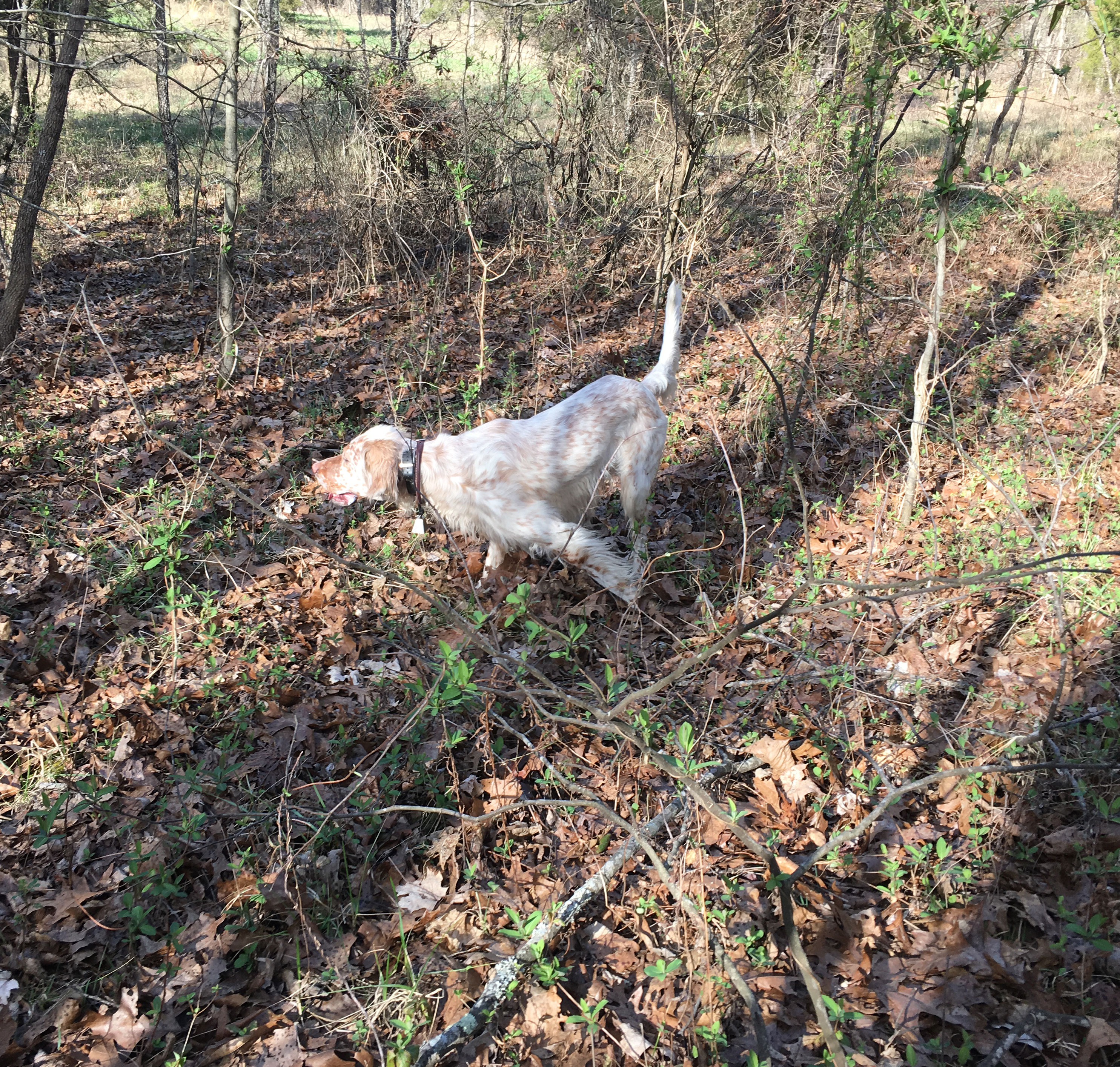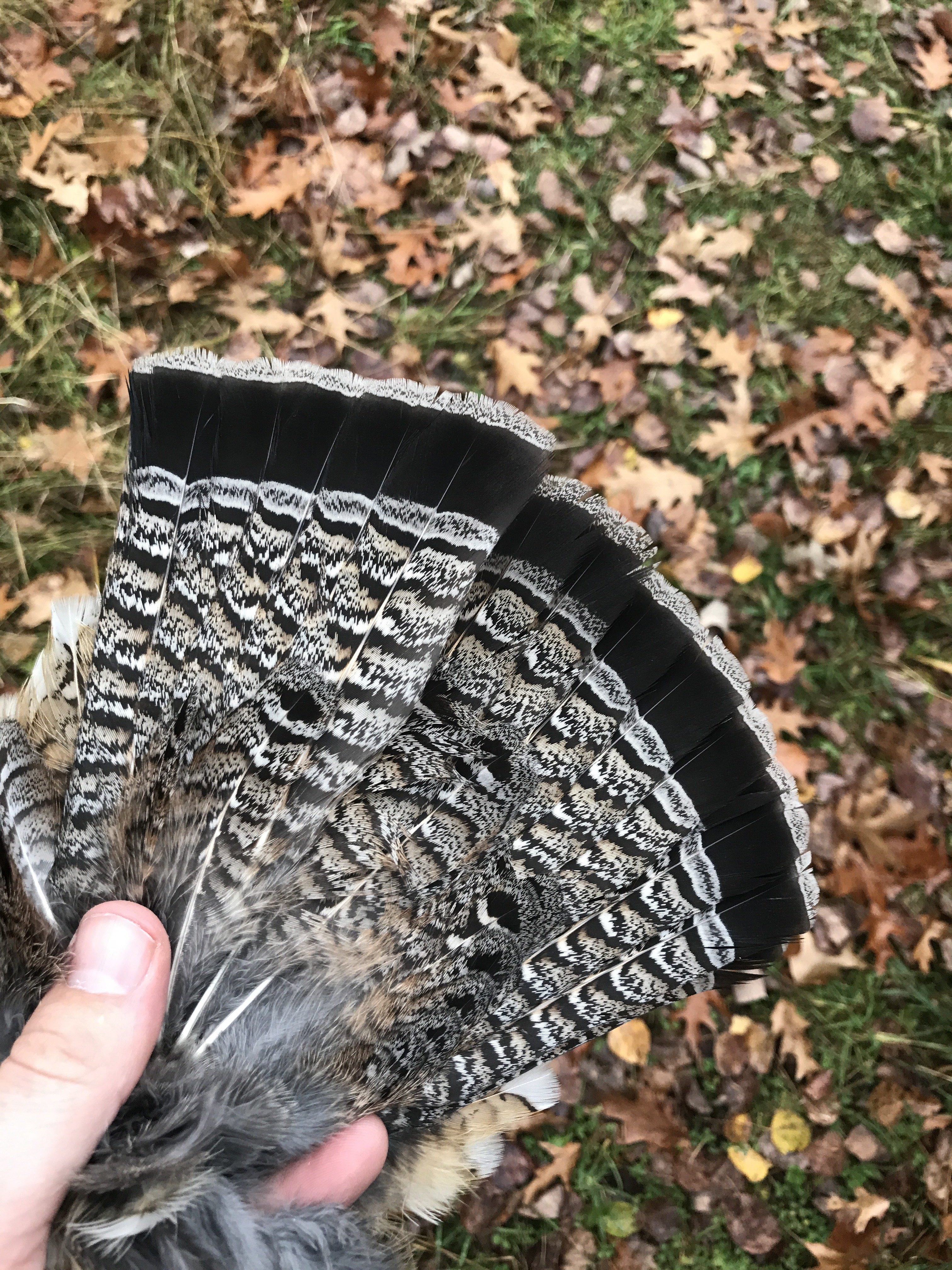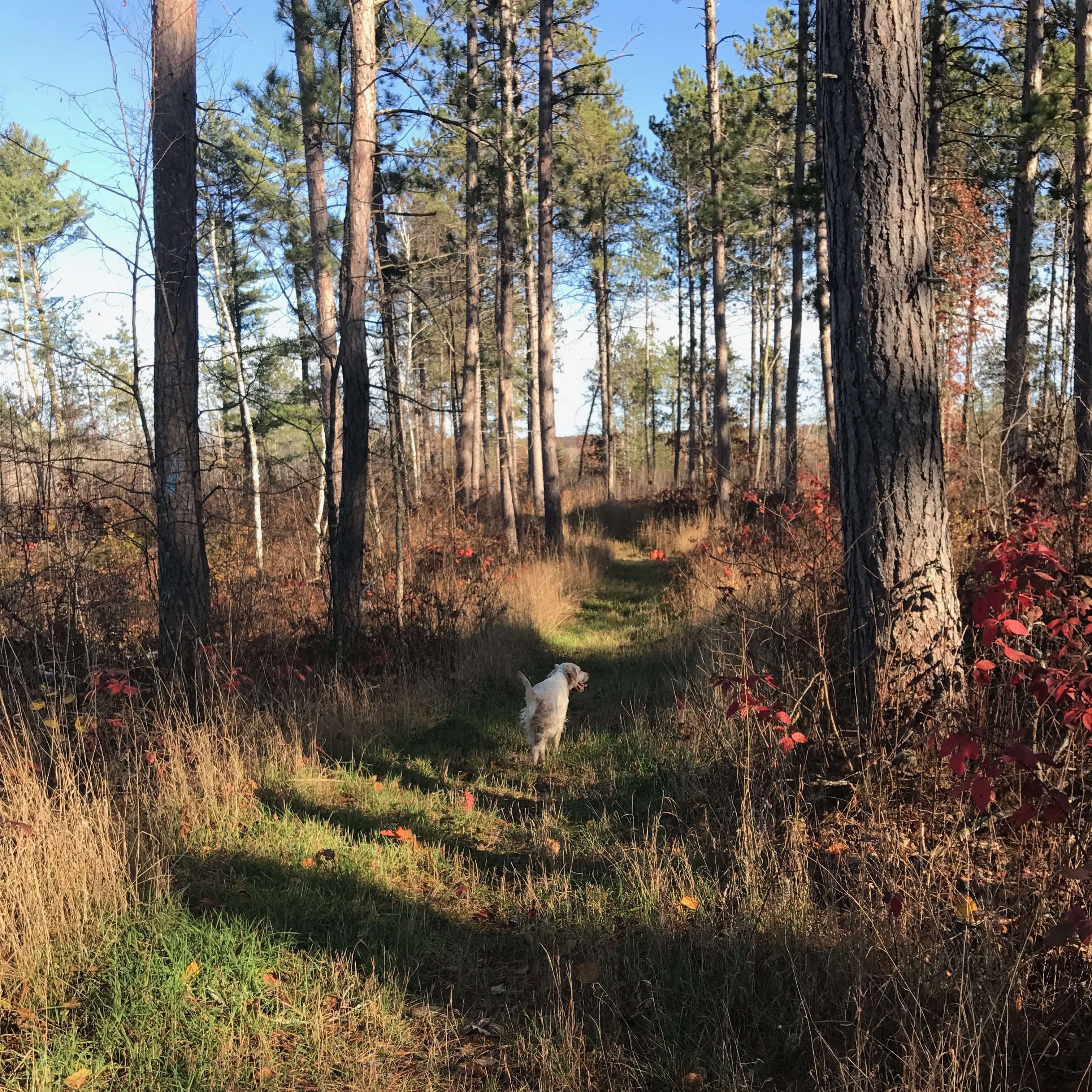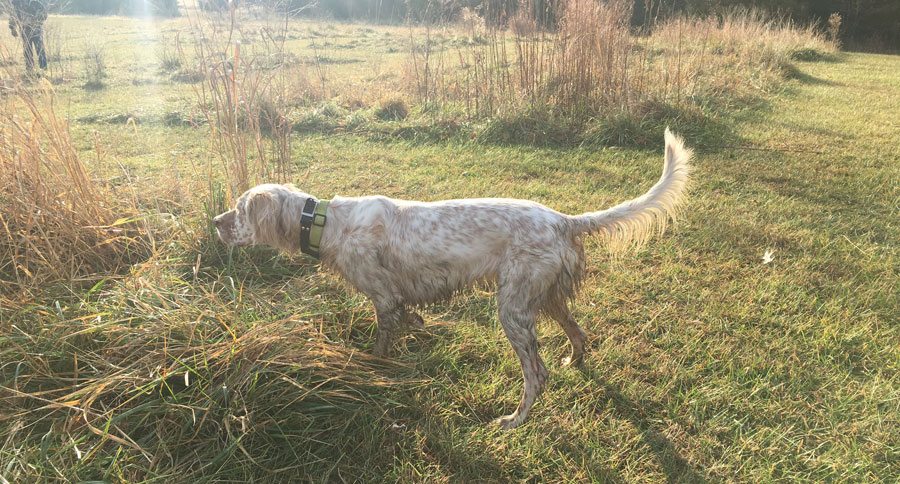A group of old-timers changed my perspective on bird hunting.
Near the end of October, I received a last-minute invite to a ruffed grouse hunt in northern Wisconsin. With a little luck, it somehow came together and I hopped on a plane the next day.
Well, it wasn't really that easy. I had to drop $200 on a TSA-approved gun case and $12 each on two TSA-approved locks the night before, all of which I thought of only 30 minutes before the nearest Cabela's closed. But, after a hectic night, I was in the air the next morning, gun and all.

The invite came from my uncle, Steve, and three of his friends whom he's hunted with for the last 40 years. Steve brought his two English Setters, Sass and Dalva, and among his friends' dogs, we also had a Brittany, a Flat-Coated Retriever and a German Shorthaired Pointer. I would stick with Steve, Sass and Dalva for most of the week.
Now, I had some bird hunting experience under my belt, but I'd never dabbled in the world of grouse hunting. For those unfamiliar with upland hunting, grouse and pheasants are royalty. Pheasants are the biggest, but grouse are the hardest to shoot.
Nothing compares to the work and difficulty attached to harvesting a ruffed grouse. All the other bird hunting I'd tried before seemed like a joke after a week of trekking through grouse cover.
When people think of bird hunting, they picture an open field where only the resistance of tall grass slows you down. However, you don't really know that "finger-on-the-trigger" mentality until you're scaling a fallen tree and you flush a grouse on the other side of a massive brier bush. You've spent the last three hours fighting through the thickest stuff you can imagine, and only now do you have an opportunity at a bird.

The landscape in this particular part of the country also features moss-covered bogs that make for some epic sinkholes. So, in addition to tearing up your arms and face with briers, you can expect to fall knee-deep into water at least once a day.
Each time I'd find myself trying to maneuver through the brush with my hands, I'd hear someone yell, "Hey, this is a two-handed sport!"
They were right, too. During those first two days, it seemed like every bird flushed when I wasn't ready. After a couple hunts, though, I learned to soldier on through the woods, letting branches and thorns beat me up. I realized if I wanted to take a bird home with me, comfort couldn't be a priority anymore.
Those first few days were defeating. Hours of pushing through taxing terrain continued to leave me empty-handed.
For the deer hunters out there, you know the feeling of seeing nothing all day. It happens more often than not, so you just learn to accept it and hope the next hunt goes better. On the other hand, the feeling of seeing a nice deer and missing an opportunity is brutal. You continue second-guessing when or where you shot. You wonder if your position ruined everything. This felt like that.
We were moving birds, though. In fact, on average, we were probably flushing something every hour, sometimes a lot in a short period of time. I just couldn't seem to get the timing right. I either wouldn't be ready for a shot when a bird flushed, or I'd be ready to go after a strong point, and the bird would flush to someone else. Two days of this leaves a person discouraged, but I was fortunate enough to have three more days of hunting.
I tried to focus on the beauty of the scenery, how methodically the dogs worked together and the indescribable, overwhelming chemistry my hosts had with one another. I tried to focus on the hunt rather than the trophy.

Early on the third day, though, the window of opportunity opened wider than I could've ever asked for. Dalva locked into the most aggressive point I'd seen all day long. She held for at least five seconds, giving me all the time in the world to get ready for a shot.
A grouse flushed into the only opening I'd seen other than a road all week, and it flew straight away from me. It was the perfect opportunity (as I barely had to move) and I completely missed.
For some reason, though, it didn't bother me as much as I thought it would. I was so excited about getting a real shot at a bird on a point, that I was more satisfied than disappointed.
A few hours later, another opportunity presented itself. Sass pointed a bird high in a tree, and the hunter to my right wanted me to get another chance at a shot. We waited for the hen to flush and after one blast, down she went.
Sass successfully made the retrieve, and just like that, I bagged my first grouse. It was downhill from here. I had learned what kind of cover grouse preferred, I started getting myself in shooter-ready habits and I continued to observe how the dogs worked together.

Less than an hour after shooting my grouse, we finally started to move some woodcock, which had been rare the first couple days. At this point, I had kind of paired up with Sass and was letting her do all the work. We had distanced ourselves from the rest of the group when I noticed her stalking something ahead. Flushing straight up was a woodcock, which I also shot.
So, after days of defeat, I landed my first grouse and my first woodcock in the course of an hour. Needless to say, I was feeling good.
The fourth day gifted me with my second grouse, which Dalva had worked for what felt like the whole day. I didn't shoot this one on a point, but we had re-flushed the same bird four or five times, all thanks to Dalva's persistence.
We collectively ended with eight grouse and more than 20 woodcock, and I finished with my two grouse and one woodcock.

Oddly enough, the numbers seemed irrelevant by the end of the week. While those are decent results, the number of birds seemed far less important to me after the trip than it did before.
As the week went on, I came to appreciate the dogs' discipline and training more and more. I would watch Sass and Dalva each glide in a figure-eight motion, covering as much ground as possible, while keeping just close enough to Steve's preference. Each was aware of where the other dog was, as well as each hunter. It slowly sunk in that this was what upland hunting is all about—the dogs.
I suppose my perspective was different before, because dogs from previous hunts didn't shoulder as much responsibility. They played more of a supporting role, whereas Sass and Dalva led the show.

Shooting a grouse is the icing on the cake. Shooting a woodcock is the sprinkles. The cake is the dog you've trained since it was just a puppy, all for the handful of times each year you get to take it hunting. It's the product of endless hours you've poured in, hoping like hell it'll work and you don't mess it up.
Steve and his buddies weren't out there to hit their limit on grouse. They were there there to watch their dogs. The competition between them wasn't in the number of birds they each shot, but rather the number of times their dogs pointed.
I learned the gist of hunting grouse in a couple days, only to realize the hunt is the easiest part.
NEXT: NEED TO FIND LAND TO HUNT ON?




